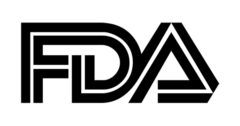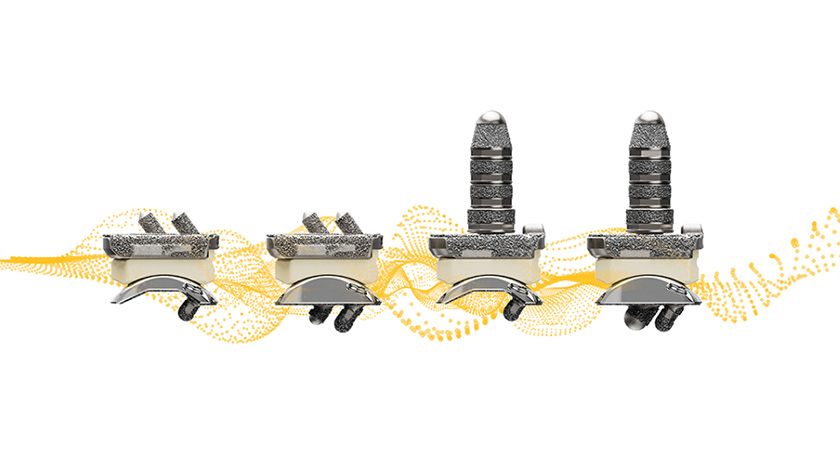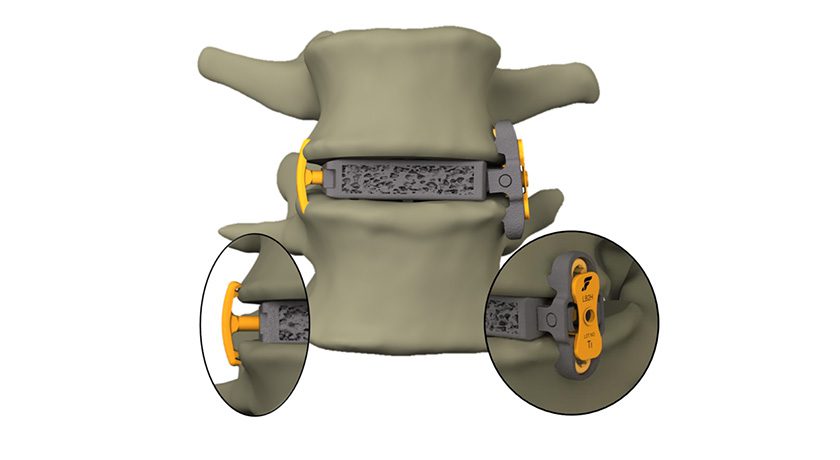
Orthopaedic device companies with simpler products like arthroscopes, certain bone fixation fasteners and surgical instruments could consider a regulatory route that doesn’t start with FDA and instead utilize the Third Party Review program. The benefits to doing so include speeding time to market and saving time and resources for more complex 510(k) products.
To set the stage, it’s important to understand the history of Premarket Notifications or 510(k)s prior to discussing third party reviews by accredited persons. Before marketing a device, each submitter must receive an order in the form of a letter from FDA, which finds the device to be substantially equivalent (SE) and states that the device can be marketed in the U.S. This order “clears” the device for commercial distribution. The concept is right on target, and the rest of the world is in harmony with the size, shape and distance of the target with similar regulatory gauntlets. It hasn’t been easy for FDA.
When playing this game of professional presence in the medical device industry, performance is sometimes measured using metrics that we would rather not use or, at least, admit to; metrics that become an Achilles heel rather than a measure of continuing success. The Premarket Notification process that sprang up following the 1976 Medical Device Amendments initiative is one such heel that, frankly, has taken on a life of its own over 40 years. We’ve got it, we’ve got it, we’ve got it. We don’t have it! It’s been a thorn because of the diverse players involved with reviews at FDA and in industry. Of course, the variables to deal with when filing the actual submission for review are sometimes overwhelming.
After a search in my files and then on FDA’s website, I drew the following conclusions. FDA has cleared about 141,000 devices using the 510(k) process since 1976. That’s about 3,500 devices per year. In 1976, the average time to get a device cleared was about 38 days. On average, in the new millennium, it has taken about 121 days, and in the 1990s it took about 147 days. Considering the topsy-turvy regulatory history at FDA, this is not shocking. In fact, one might say this is fairly typical. FDA has been under the gun for 40 years to make this process work. And it’s still not working in an efficient and effective manner, considering the big picture.
In recent years, reports such as the Institute of Medicine’s “Medical Devices and the Public’s Health: The FDA 510(k) Clearance Process at 35 Years,” published in 2011, indicate how individuals and organizations have expressed concern that the 510(k) clearance process is neither making safe and effective devices available to patients nor promoting innovation in the medical device industry. Several high-profile mass media reports and consumer protection groups have profiled recognized or potential problems with medical devices cleared through the 510(k) clearance process. The medical device industry and some patients have asserted that the process has become too burdensome, and is delaying the entry of important new medical devices to the market. Enter the Third Party Review program. Not so quick…we’ve got it; we don’t have it!
A Lukewarm History – The Use of Accredited Persons
About 20 years ago, FDA began a voluntary Third Party Review Pilot Program for selected medical device 510(k)s. The purpose of the pilot program was to:
- Provide manufacturers of eligible devices with an alternative 510(k) review process that could yield more rapid marketing clearance decisions,
- Improve the efficiency and timeliness of FDA’s 510(k) process, and
- Enable FDA to use its scientific review resources for higher-risk devices, while maintaining confidence in the review by third parties of low- to moderate-risk devices. Under the program, all Class I devices that were not exempt from 510(k) at that time and 30 Class II devices were eligible for third party review.
Under the program, FDA accredited third parties (Accredited Persons) that were authorized to conduct the primary review of 510(k)s for eligible devices. Companies who have medical devices that are required to submit 510(k)s to gain market clearance may choose to contract with an accredited person and submit a 510(k) directly to that person. This person conducts the principal review of the draft 510(k), and then forwards the review, recommendation and the 510(k) to FDA. Companies that do not wish to use an accredited person may submit their 510(k)s directly to FDA. FDA maintains a list of Accredited Persons—as well as a detailed list of device-types eligible for third-party review. Not all third parties are accredited for all product types.
FDA Modernization Act (FDAMA)
President Bill Clinton signed the FDAMA into law on November 21, 1997, which:
- Directed FDA to accredit third parties (Accredited Persons) in the private sector to conduct the initial review of 510(k)s for low-to-moderate risk devices,
- Specified that an Accredited Person may not review any Class III or Class II devices that are permanently implantable, life-supporting, life-sustaining, or for which clinical data are required, and
- Set limits on the number of Class II devices that may be ineligible for Accredited Person review because clinical data are required.
In 1998, FDA published a list of persons accredited to conduct 510(k) reviews for certain devices. Accredited Persons were eligible to begin to review applications after they successfully completed a training session. In 1998, FDA began accepting 510(k) reviews from Accredited Persons. The Accredited Persons Program is intended to enable FDA to use its scientific review resources for higher-risk devices, while maintaining a high degree of confidence in the review of low- to moderate-risk devices by Accredited Persons, and to provide manufacturers of eligible devices with an alternative review process that may yield more rapid 510(k) decisions.
Under the Accredited Persons Program, thousands of devices have been initially reviewed by third parties, enabling those products to reach the market weeks earlier than if sent directly to FDA.
Which Devices Are Eligible for Accredited Person Review?
Submissions eligible for third-party review are generally those for Class I and Class II devices requiring 510(k) clearance that are not implantable, life-sustaining or life-supporting, and where substantial equivalence can be demonstrated without the need for human clinical data. The list is short for orthopaedics, but includes important products like arthroscopes and bone fixation fasteners.
FDA has made available on the Center for Devices and Radiological Health (CDRH) Home Page a list of Class I and Class II devices regulated by CDRH that the agency believes are not prohibited from Accredited Person review under the act. This list of devices is updated periodically. Some important exceptions that are not reflected in the eligible device list:
- Even if it does not appear on the list, a device may be eligible if it is a Class I or Class II device that has been exempted from 510(k) by regulation, but requires a 510(k) because it exceeds the limitations of the exemption (as discussed in FDA’s device classification regulations). Devices that are exempt from 510(k) are not shown on the list.
- A Class II device on the list is ineligible if a 510(k) for the device requires clinical data to demonstrate substantial equivalence.
- A device on the list is ineligible if a 510(k) for the device requires multi-Center review (e.g., 510(k)s for drug/device combination products) or if a Center other than CDRH has primary responsibility for review (e.g., the Center for Biologics Evaluation and Research).
Concluding Statements
After that lukewarm review, I still believe that there are some advantages to working with third-party reviewers. One such benefit is that no FDA user fees are levied on third parties. Third-party costs can range between $6,000 and $10,000, depending upon device complexity and which FDA panel you are dealing with. Some third-party organizations are also sanctioned to review 510(k)s for any device eligible under the Accredited Persons Program, which is a plus for the diverse industry we work in. The engineers that are Accredited Persons have, in many cases, selected competencies focused on the device going through the premarket notification process. Third party participants are commonly subject matter experts with these assigned devices and technologies, and the panels are usually comfortable working with these individuals as well. This can be a plus when dealing with entrepreneurs who, from my observations, don’t necessarily hire people with the proper backgrounds and experience to deal with the technology but also, more importantly, with FDA.
There are some common misconceptions about third-party reviews that submitting companies should appreciate. The Accredited Person 510(k) review process is not a “boiler plate or rubber-stamp” mechanism for companies to achieve marketing approval. Once the third party offers its recommendation to FDA, the branch chief performs a final review (just as if the submission were sent to FDA directly by the submitting company) and does not always issue an immediate clearance. Don’t get me wrong; you should have a better chance of clearing a device through the 510(k) process in a more expeditious manner, but it is not a forgone conclusion.
Generally Speaking
Medical-device technologies have evolved rapidly, and devices have become increasingly complex since the 1976 Medical Device Amendments. Industry-funded assessments of the effects of the 510(k) clearance process report that implementation of the process leads to a lack of predictability and transparency, which in turn has an adverse effect on venture-capital investment. The filing of 510(k)s in the U.S. has been dropping year after year. Other countries that tightly regulate medical devices do not rely solely on substantial equivalence to a predicate for premarket review of medium-risk devices. The Global Harmonization Task Force also does not offer as part of its guidance a predicate-based system for premarket review of medical devices. There is little collaboration in the collection of post-marketing surveillance data among FDA, healthcare facilities, healthcare providers, the medical-device industry, professional societies, payors and patient-advocacy groups. As with history, third parties can make a difference.
John Gagliardi has had success over the past 46 years in the medical device and pharmaceutical industries because of his hands-on approach to process-orientation and business perception. He has been actively involved in research and development, quality assurance, training, operations, process architecture, FDA inspections and regulatory affairs. Mr. Gagliardi specializes in building systems in a compliant and business-ready manner. Mr. Gagliardi can be reached by email.
MidWest Process Innovation, LLC
www.midwestprocessinnovation.com
www.mpillc.co




